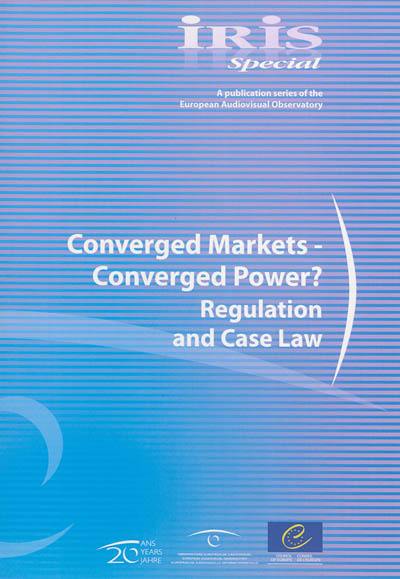
Fiche technique
Format : Broché
Nb de pages : 187 pages
Poids : 400 g
Dimensions : 21cm X 30cm
ISBN : 978-92-871-7595-3
EAN : 9789287175953
Converged markets-converged power ?
regulation and case law
Quatrième de couverture
Market power becomes an issue for European and national law makers whenever market players acquire a degree of power which severely disturbs the market balance. In this sense, the audiovisual sector is no exception. But this sector is different in that too much market power may not only endanger the competitive parameters of the sector but may also become a threat to the freedom of information. It is this latter aspect which turns market power into a particularly sensitive issue for the audiovisual sector. National legislators and regulators backed by national courts seek solutions adapted to this problem.
This IRIS Special issue deals with the regulation of market power in the audiovisual sector in Europe.
The first part of this IRIS Special explores the European Union's approach to limiting media power, an approach still dominated by the application of competition law. This IRIS Special explains the general functioning of competition law and other regulatory instruments. It specifically shows how the various services provided in the audiovisual sector are regulated and what markets are to be distinguished.
The second part contains a description of the legal frameworks of 11 European countries used to address media power. For each of these countries you will find in particular information on the regulation of audiovisual media services and enabling services, platforms and converged services, and finally distribution services.
The eleven countries were selected for this study because they either represented major markets for audiovisual media services in Europe, or because they developed outside the constraints of the internal market, or because they had some interesting unique feature, for example the ability to attract major market players despite lacking an adequately sized market.
The third part brings in the economic background in the form of different overviews concerning audience market shares for television and video online. This data puts the legal information into an everyday context.
The fourth and final part seeks to tie together the common threads in state regulation of media power, to work out the main differences and to hint to some unusual solutions. Here and there it will weave in aspects of EU law that have influenced the national legal frameworks.
This IRIS Special issue is a milestone on the way towards greater transparency in the audiovisual sector concerning the regulation of market power. It also highlights the challenges of regulating converged markets and related market power.
This comprehensive and timely analysis clarifies the complex subject of the regulation of market power across Europe.





